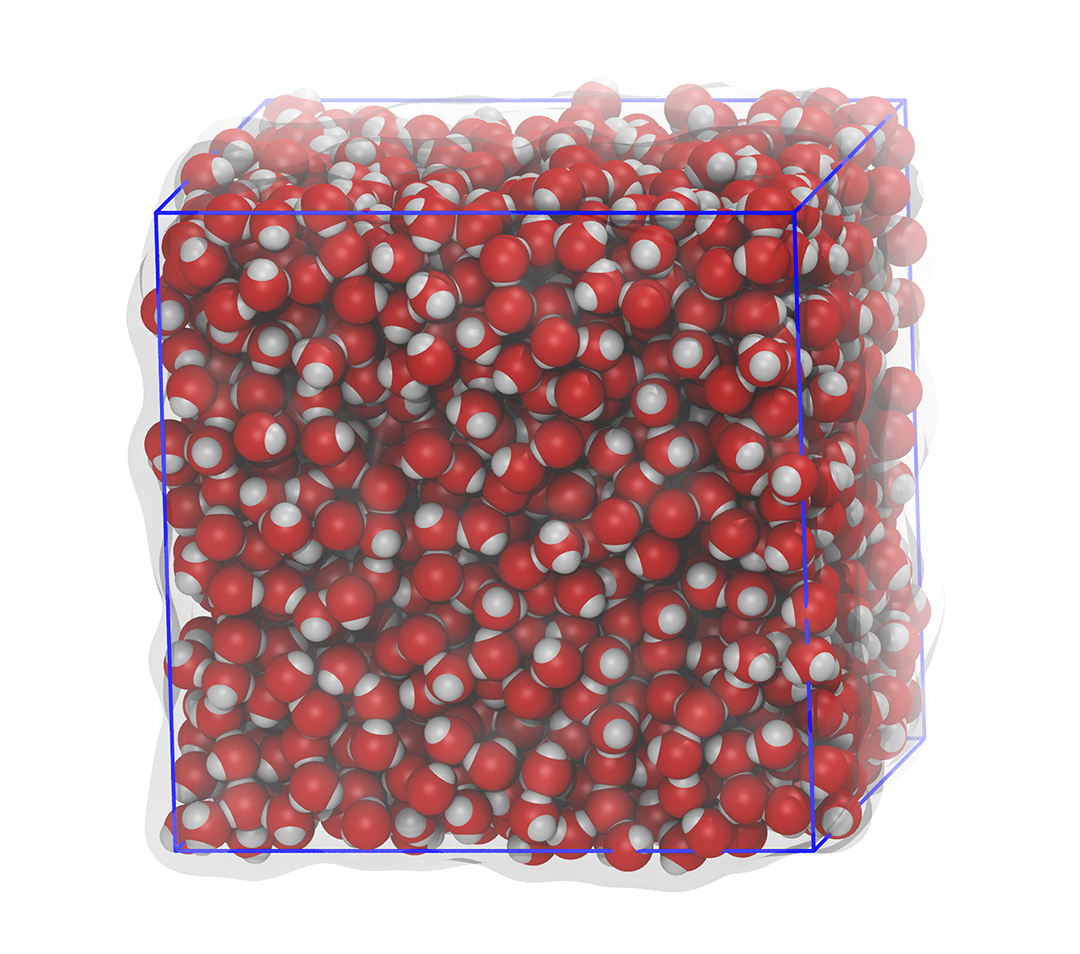The 4-point Optimal Point Charge (OPC) and 3-point OPC (OPC3) models are highly accurate water models, used extensively in molecular simulations to reproduce the properties of bulk water. However, there are no reports on whether these models can accurately reproduce the viscosity of water. Recently, a researcher from Japan tested the performance of the OPC and OPC3 models by evaluated their shear viscosities and comparing them to experimental results.
Water is one of the most abundant substances on Earth and partakes in countless biological, chemical, and ecological processes. Thus, understanding its behavior and properties is essential in a wide variety of scientific and applied fields. To do so, researchers have developed various water models to reproduce the behavior of bulk water in molecular simulations. While these simulations can provide valuable insights into the specific properties of water, selecting an appropriate model for the system under study is crucial. Today, two water models have become very popular among biomolecular researchers: the 4-point Optimal Point Charge (OPC) and 3-point OPC (OPC3) models. These models are known for their ability to reproduce several properties of water with high accuracy, including density, heat of vaporization, and dielectric constant. However, there is limited information on whether OPC and OPC3 water models can accurately predict the shear viscosity of water.
The viscosity of water greatly affects how water molecules interact with other substances and surfaces, dictating critical phenomena such as diffusion and absorption. This affects the texture and taste of foods and beverages, as well as how oils and liquids interact with food during cooking. More importantly, the viscosity of water needs to be considered when designing and manufacturing pharmaceutical products, as well as many types of lubricants and polymeric materials. In addition, it influences how water and water-based solutions flow through small tubes, such as those in our circulatory system and in microfluidic devices.
Recently, Associate Professor Tadashi Ando from
Tokyo University of Science conducted a study to test the performance of the OPC and OPC3 models, by evaluating their shear viscosities and comparing the values to the experimental calculations. These findings were published in Volume 159, Issue 10 of The Journal of Chemical Physics on September 14, 2023.
First, Dr. Ando set up molecular dynamics simulations of up to 2,000 water molecules using popular water models, including OPC, OPC3, and variants of the Transferable Intermolecular Potential 3-point (TIP3P) and 4-point (TIP4P) models. Next, he used an approach known as the Green-Kubo formalism—a commonly used method from statistical mechanics to study viscosity and heat conduction in various materials— to calculate the viscosity of the models.
The calculated viscosities for both OPC and OPC3 water models were very close to each other for temperatures ranging from 273 K to 373 K. Notably, for temperatures above 310 K, the viscosity predicted by these models was very close to that predicted by previous experimental findings. However, this was not the case at lower temperatures. Dr. Ando explains, “Compared to other water models, the performance of the OPC and OPC3 models in terms of predicting the shear viscosity was lower than that of TIP4P and TIP3P variants, but only for temperatures below 293 K.” Notably, at 273 K and 293 K, the shear viscosities of the two models were around 10% and 20% lower, respectively, as compared to those derived experimentally.
In addition to viscosity, Dr. Ando also assessed the performance of the OPC and OPC3 models for predicting other important water properties, such as surface tension and self-diffusion. The performance of OPC and OPC3 for these properties was remarkably accurate. “Based on the results of this study, along with those from previous reports, we can conclude that the OPC and OPC3 are among the best nonpolarizable water models at present, accounting for the various static and dynamic properties of water,” highlights Dr. Ando.
Overall, this study provides a thorough understanding of the advantages and limitations of water models. With any luck, this will help scientists polish these models to make them even more useful across various technological fields!
